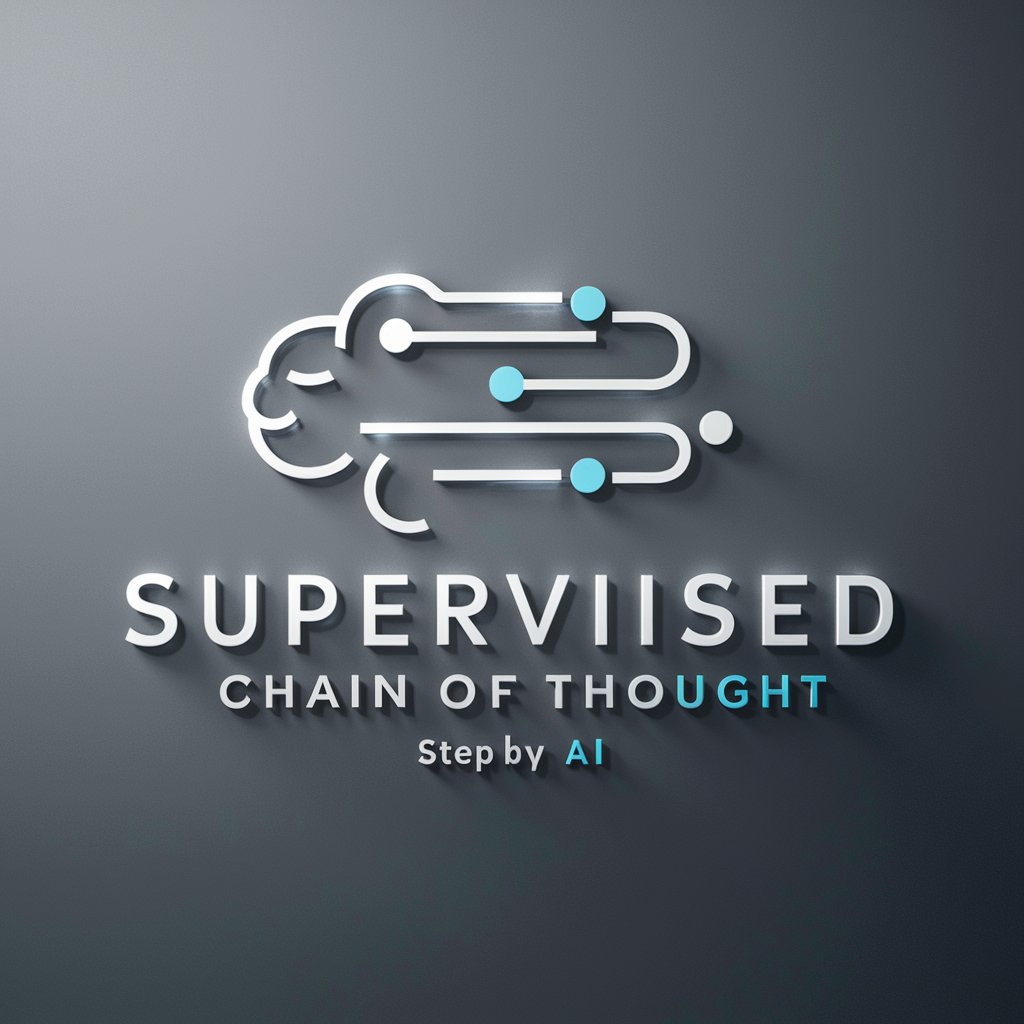Supervised Chain of Thought - Logical Reasoning Aid

Welcome! Let's solve problems step by step.
Solve Complex Problems with AI-Powered Reasoning
Describe a process of breaking down complex problems into simpler steps.
Explain how logical reasoning is applied to problem-solving.
Outline the steps needed to transport a fox, two chickens, and a boat across a river safely.
Provide a detailed plan for measuring exact quantities using two jugs of different capacities.
Get Embed Code
Introduction to Supervised Chain of Thought
Supervised Chain of Thought (SCT) is a specialized approach designed to tackle complex problems by breaking them down into smaller, more manageable steps, mirroring human problem-solving behavior. This method involves first understanding a problem in depth, then outlining a step-by-step plan to address it, evaluating the correctness of each step, and iteratively refining the steps until a viable solution is achieved. The purpose of SCT is to enhance clarity, accuracy, and efficiency in problem-solving processes across various domains. For example, in a scenario where one needs to solve a logic puzzle, such as safely transporting animals across a river, SCT would guide the user through creating a plan, evaluating and adjusting it as needed until the puzzle is solved in a logical and systematic manner. Powered by ChatGPT-4o。

Main Functions of Supervised Chain of Thought
Problem Decomposition
Example
Breaking down the process of creating a budget into smaller steps like categorizing expenses, estimating monthly costs, and setting savings goals.
Scenario
Used in financial planning, where a complex goal is made manageable through systematic breakdown.
Iterative Evaluation and Refinement
Example
In software development, iteratively writing and testing code snippets to solve a larger programming challenge.
Scenario
Helps developers ensure each part of their code works correctly before integrating it into a larger system.
Solution Verification
Example
Checking the steps of a math problem to ensure that each phase logically follows from the last, leading to a correct final answer.
Scenario
Used in educational settings, particularly in STEM subjects, to teach and reinforce problem-solving skills.
Ideal Users of Supervised Chain of Thought Services
Educators and Students
This group benefits from SCT by learning and teaching complex problem-solving in a structured, understandable way. It is particularly useful in STEM education, where understanding the process is as important as the final answer.
Professionals in Problem-Solving Intensive Fields
Engineers, programmers, financial analysts, and other professionals who regularly tackle complex, multi-step problems can use SCT to break down challenges, evaluate solutions, and refine strategies systematically.
Researchers and Innovators
Individuals working on new technologies, scientific discoveries, or business models can apply SCT to navigate the uncertainties and complexities inherent in innovation, ensuring a thorough examination and validation of each step in their process.

Guidelines for Using Supervised Chain of Thought
Start Your Trial
Visit yeschat.ai to begin a free trial without needing to log in or subscribe to ChatGPT Plus, offering direct access to the tool.
Understand the Basics
Familiarize yourself with the concept of Chain of Thought processing, which helps in breaking down complex problems into manageable steps for better understanding and solution.
Identify Your Needs
Determine the specific problem or question you need assistance with, as Supervised Chain of Thought is designed to handle a wide range of inquiries through structured reasoning.
Engage with the Tool
Input your question or problem into the tool clearly and concisely. For optimal results, provide as much relevant detail as possible to guide the thought process.
Analyze the Outcome
Review the step-by-step breakdown provided by the tool. This will not only give you the answer but also show you the logical path taken to arrive at that conclusion.
Try other advanced and practical GPTs
Summary Sage
Distill Knowledge, Enhance Learning with AI

Haruka Sora - Python Expert
Elevate Your Python Game with AI Expertise

NodeJS 20.x
Power your applications with NodeJS 20.x

God's Japanese
Elevate Your Japanese with AI

Perfect GPT Instruction Creator
Craft AI commands with precision

Logistics Pro
Streamlining Logistics with AI Power

Elimination Phase AIP Meal Planner
Personalized AIP Meal Planning, AI-Powered

Bulgarian Linguist
Master Bulgarian with AI-Powered Phonetics

"Avocate"
Empowering legal decisions with AI

TeamExperts: 8
Empowering Projects with AI Expertise

365 Virtual Pet
Your AI-powered digital companion.

Hotdog or Not Hotdog
AI-powered hotdog recognition tool

Q&A about Supervised Chain of Thought
What is Supervised Chain of Thought?
Supervised Chain of Thought is a cognitive AI process that breaks down complex queries into manageable steps, simulating human-like reasoning to find solutions.
Can it solve any type of problem?
While it's designed to tackle a wide range of problems, its effectiveness depends on the clarity of the question and the logical structure of the problem presented.
How does it differ from traditional AI?
Unlike traditional AI that often provides direct answers, Supervised Chain of Thought explains the reasoning behind its conclusions, offering insights into its thought process.
Is it suitable for educational purposes?
Yes, it's highly beneficial for educational purposes, especially for teaching problem-solving skills and demonstrating logical reasoning steps.
How can one optimize their use of this tool?
For optimal use, present questions clearly and with enough detail, be open to engaging with the tool's reasoning process, and use the insights provided to enhance understanding.
